Vegetarian tom kha (vegan, in fact, because that's what we do here) is a creamy coconut milk heavy Thai soup made with an infusion of aromatic ingredients.
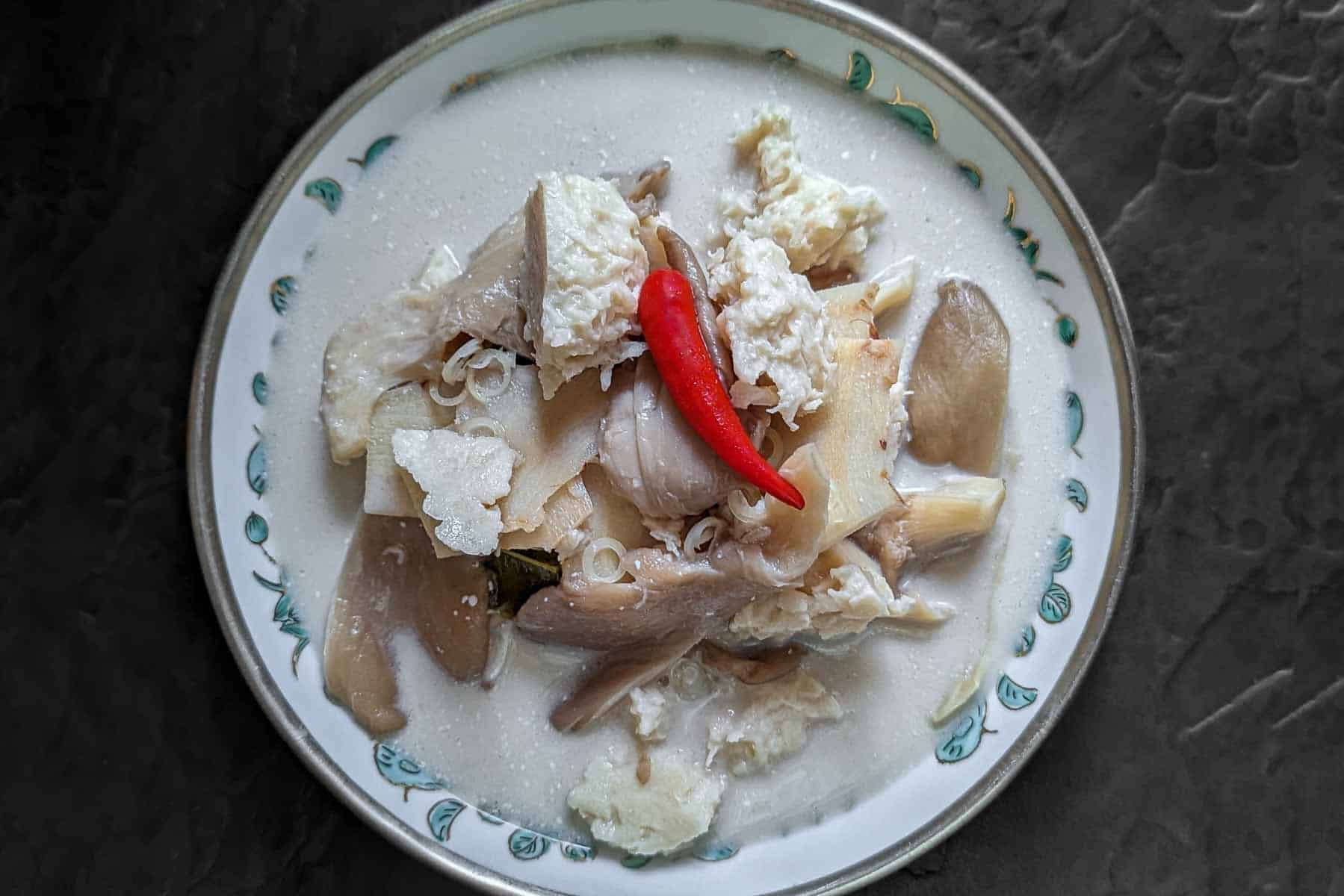
The consistency is similar to a thin curry (in Thailand curries are generally much thinner than how they are served in their counterpart restaurants abroad) with some similarities to tom yum soup (especially if it's the kind with added milk). The foremost flavours are sour and salty, the mouthfeel silky from the richness of coconut milk.
What isn't tom ka?
Okay so I see a whackload of insane takes on basic Thai dishes (any of the images that rank on search engines for Thai green curry, for example), but the results for tom kha win the hubris prize by a landslide.
Many of you will understand the frustration of the masses getting the basics wrong with regards to a topic you know well. Consequently, it's a challenge to avoid the path of explaining what's wrong with everyone else when teaching about the topic in question, but sometimes we just have to. Right? Right. I don't have enough clout with any higher ups to lobby a ban on food deficients from the internet, so please allow this intermission while I rant for a moment.
Based on the results from googling "vegan tom kha recipe," I want to write briefly about what tom kha isn't.
- It isn't a curry. Tom kha does not contain curry paste of any kind, ever, full stop.
- There is no frying involved at any stage in the process. Everything happens in one pan, starting with making an infusion of the aromatics and liquid. The word tom means to boil, after all.
- The ingredients aren't 700 kinds of mixed vegetables. Related: knock it off with the bell peppers. I'm sorry for whatever happened to you to make you into this broken adult.
- One blogger adds ginger powder, while galangal doesn't feature at all (nor lemongrass and lime leaf). Call it coconut soup, but don't drag Thailand into your paucity of critical thoughts.
- Just because something is Thai does not mean Thai basil must go in. Imagine a Thai person brewing a cuppa and chucking a couple teaspoons of English mustard and a glob of Marmite in for authenticity.
These authors are well-meaning and the hubris perhaps benevolent, but having a blog and a hob does not make anyone an authority. In order to be taken seriously in any field, whether career or hobby, we must consume other people's work. When people get the basics so wrong, it's clear they don't. It's disappointing.
Substitutions
The only thing to substitute would be the add-ins such as tofu or vegan chicken.
Ginger is not an appropriate substitute for galangal. Would it produce an edible, and perhaps even tasty, soup? Probably. It just won't be tom ka.
Top tips
Don't over boil the coconut milk. One of the reasons the cooking time is short and I add some coconut milk at the end of cooking is to keep the coconut milk from cracking. But if some oil does begin to separate out it's no big deal.
With the above in mind, many recipes for tom ka and tom yum demand its makers boil the aromatics for just a handful of minutes. This has always been my method, until I recently tried a recipe in a book by a well known Thai chef (aajaan Srisamon) that calls for a 10 minute simmer time for the galangal. The trick is the keep the heat at a very low simmer so you avoid cracking the coconut cream while extracting more flavour from the rhizome.
📖 Recipe
Authentic vegan tom kha recipe ต้มข่าวีแกน
Ingredients
- 500 millilitres coconut milk preferably Aroy-D brand, divided
- 450 millilitres unsalted homemade light stock or water
- 50 grams galangal sliced into thin coins
- 1 teaspoon salt
- 250 grams firm tofu
- 1 stem lemongrass lower part thinly sliced (paper thin). If there’s more left then bash the stem and throw in
- 1 tablespoon thin Thai soy sauce See notes
- 1 teaspoon white or palm sugar
- 250 grams oyster mushrooms or whatever mushrooms
- 0-10 bird’s eye chillies bashed with the back of a knife
- 5-6 makrut lime leaves torn (if fresh off a tree, only use 3-4)
- 2-2 ½ tablespoons fresh lime juice
- Coriander to garnish
Instructions
- Add half the coconut milk, all of the stock, the galangal and salt to a saucepan. Bring the the boil. As soon as it boils, knock the heat down to a gentle simmer (somewhere in the medium-low range).
- Add the tofu. Maintain a low simmer and cook for 8-10 minutes.
- Add the remaining coconut milk, lemongrass, soy sauce, sugar, mushrooms, chillies and lime leaves. Simmer for 5 minutes.
- Turn off the heat and stir 2 tablespoons of the lime juice through. Taste for balance and add the remaining lime juice if needed.
- Serve garnished with fresh coriander.
Notes
More Thai recipes
Looking for other Thai recipes? Try these:

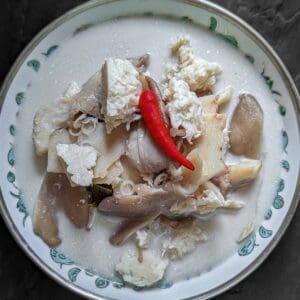


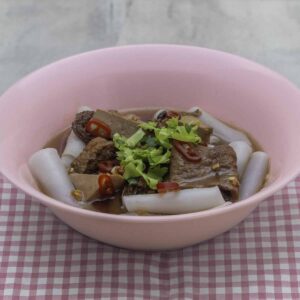
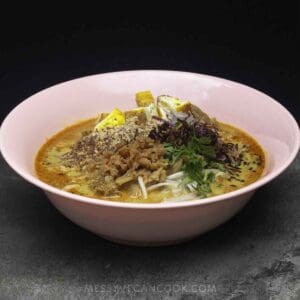
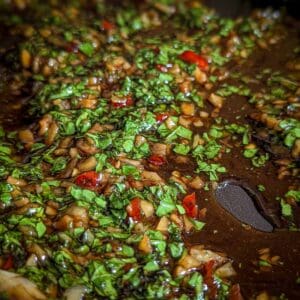
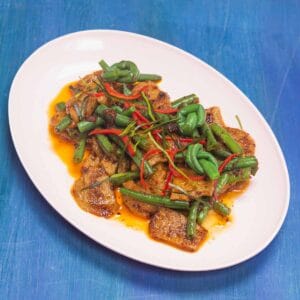
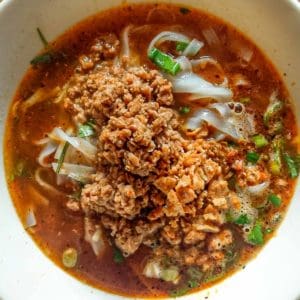
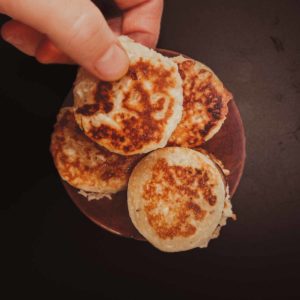
Daphne says
Wow! The first recipe from this blog I’ve tried and it’s just amazing and complex and like a warm hug
Kip says
ahh thank you so much for coming back to say 🙂
Kat says
Incredibly delicious and extremely easy to make! I used water instead of stock and pressed tofu instead of firm. Everyone should try this!!
I reserve the right to improve malicious and trollish comments.